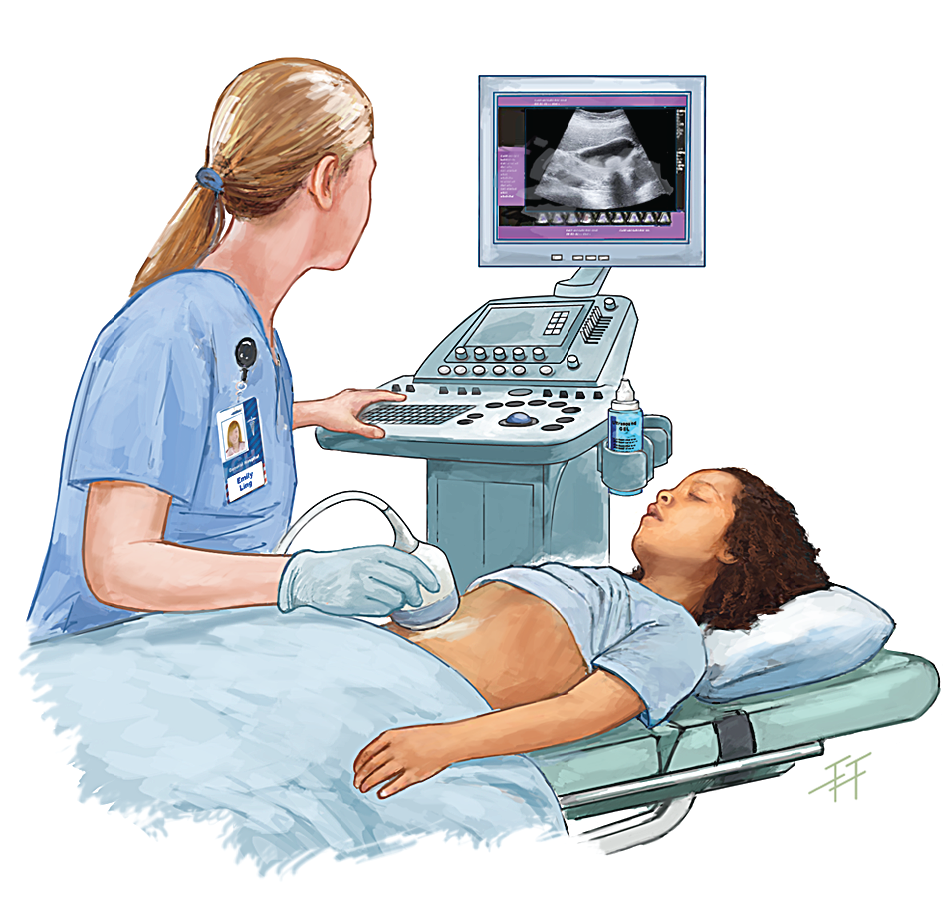当前位置:
X-MOL 学术
›
JAMA Pediatr.
›
论文详情
Our official English website, www.x-mol.net, welcomes your feedback! (Note: you will need to create a separate account there.)
New Approaches for Appendicitis in Children
JAMA Pediatrics ( IF 26.1 ) Pub Date : 2017-11-01 , DOI: 10.1001/jamapediatrics.2017.2935 Megan A. Moreno
JAMA Pediatrics ( IF 26.1 ) Pub Date : 2017-11-01 , DOI: 10.1001/jamapediatrics.2017.2935 Megan A. Moreno

|
Appendicitis happens when the appendix gets blocked with a particle in the stool and then becomes inflamed. The blockage can cause bacteria to overgrow in the appendix, leading to infection and inflammation. Appendicitis is a common condition in childhood and typically occurs after age 10 years, although it can occur at any age. Appendicitis is the most common disease leading to surgery in children. Children with appendicitis usually have abdominal pain that may begin in the middle of the abdomen and later become most painful in the lower right areas of the abdomen, where the appendix is located. They often have a fever, as well as vomiting, nausea, and loss of appetite. Compared with viral illnesses that can also include these symptoms, appendicitis symptoms typically get worse over time to the point in which a child may refuse to eat or avoid moving because of the abdominal pain. If you are concerned about appendicitis, call your pediatrician. New research and clinical updates have led to changes in how appendicitis is diagnosed and treated. In the past, appendicitis was commonly diagnosed with a computed tomography scan. However, it is now common to use ultrasonography to help with diagnosing. This approach can help avoid the radiation and risks that are associated with computed tomography scans. For more information about radiation risks for kids, see the Advice for Patients article “Decreasing Unnecessary Radiation Exposure for Children” (http: //jamanetwork.com/journals/jamapediatrics/fullarticle/384539). Further, a diagnosis of appendicitis used to mean that surgery was almost guaranteed, but now additional treatment options may be possible. Instead of surgery using an “open appendectomy,” in which a surgeon removes the appendix through an incision in the abdomen, the more common approach for surgery is laparoscopic, which allows surgeries to take place using instruments that are inserted through tiny incisions. Laparoscopic approaches typically have a lower risk of infections and complications, as well as better pain control after the surgery and faster recovery. Another change in the treatment of appendicitis is the involvement of antibiotics. Because appendicitis is typically associated with bacteria trapped in the blocked appendix, some physicians use antibiotics either before, or instead of, surgery to treat appendicitis. In some cases, such as perforated appendicitis, treatment can involve an “interval appendectomy.” This treatment involves an initial antibiotic treatment and then a return for an appendectomy. Nonoperative treatment for appendectomy has been shown to be as effective as surgery in up to 90% of children.
中文翻译:

治疗儿童阑尾炎的新方法
当阑尾被粪便中的颗粒阻塞然后发炎时,就会发生阑尾炎。堵塞会导致细菌在阑尾过度生长,导致感染和炎症。阑尾炎是儿童时期的一种常见疾病,通常发生在 10 岁之后,尽管它可以发生在任何年龄。阑尾炎是导致儿童手术的最常见疾病。患有阑尾炎的儿童通常有腹痛,可能从腹部中间开始,然后在腹部右下区域(阑尾所在的区域)变得最疼痛。他们经常发烧、呕吐、恶心和食欲不振。与也可能包括这些症状的病毒性疾病相比,随着时间的推移,阑尾炎的症状通常会变得更糟,以至于孩子可能会因为腹痛而拒绝进食或避免移动。如果您担心阑尾炎,请致电您的儿科医生。新的研究和临床更新导致阑尾炎的诊断和治疗方式发生了变化。过去,阑尾炎通常通过计算机断层扫描来诊断。然而,现在通常使用超声检查来帮助诊断。这种方法可以帮助避免与计算机断层扫描相关的辐射和风险。有关儿童辐射风险的更多信息,请参阅患者建议文章“减少儿童不必要的辐射暴露”(http://jamanetwork.com/journals/jamapediatrics/fullarticle/384539)。更多,阑尾炎的诊断过去意味着几乎可以保证手术,但现在可能有其他治疗选择。与使用“开放性阑尾切除术”的手术不同,外科医生通过腹部切口切除阑尾,更常见的手术方法是腹腔镜,它允许使用通过微小切口插入的器械进行手术。腹腔镜方法通常具有较低的感染和并发症风险,以及手术后更好的疼痛控制和更快的恢复。阑尾炎治疗的另一个变化是抗生素的参与。由于阑尾炎通常与阻塞在阑尾中的细菌有关,因此一些医生在手术前或手术后使用抗生素治疗阑尾炎。在某些情况下,例如穿孔性阑尾炎,治疗可能涉及“间隔阑尾切除术”。这种治疗包括初始抗生素治疗,然后返回阑尾切除术。对高达 90% 的儿童而言,阑尾切除术的非手术治疗已被证明与手术一样有效。
更新日期:2017-11-01
中文翻译:

治疗儿童阑尾炎的新方法
当阑尾被粪便中的颗粒阻塞然后发炎时,就会发生阑尾炎。堵塞会导致细菌在阑尾过度生长,导致感染和炎症。阑尾炎是儿童时期的一种常见疾病,通常发生在 10 岁之后,尽管它可以发生在任何年龄。阑尾炎是导致儿童手术的最常见疾病。患有阑尾炎的儿童通常有腹痛,可能从腹部中间开始,然后在腹部右下区域(阑尾所在的区域)变得最疼痛。他们经常发烧、呕吐、恶心和食欲不振。与也可能包括这些症状的病毒性疾病相比,随着时间的推移,阑尾炎的症状通常会变得更糟,以至于孩子可能会因为腹痛而拒绝进食或避免移动。如果您担心阑尾炎,请致电您的儿科医生。新的研究和临床更新导致阑尾炎的诊断和治疗方式发生了变化。过去,阑尾炎通常通过计算机断层扫描来诊断。然而,现在通常使用超声检查来帮助诊断。这种方法可以帮助避免与计算机断层扫描相关的辐射和风险。有关儿童辐射风险的更多信息,请参阅患者建议文章“减少儿童不必要的辐射暴露”(http://jamanetwork.com/journals/jamapediatrics/fullarticle/384539)。更多,阑尾炎的诊断过去意味着几乎可以保证手术,但现在可能有其他治疗选择。与使用“开放性阑尾切除术”的手术不同,外科医生通过腹部切口切除阑尾,更常见的手术方法是腹腔镜,它允许使用通过微小切口插入的器械进行手术。腹腔镜方法通常具有较低的感染和并发症风险,以及手术后更好的疼痛控制和更快的恢复。阑尾炎治疗的另一个变化是抗生素的参与。由于阑尾炎通常与阻塞在阑尾中的细菌有关,因此一些医生在手术前或手术后使用抗生素治疗阑尾炎。在某些情况下,例如穿孔性阑尾炎,治疗可能涉及“间隔阑尾切除术”。这种治疗包括初始抗生素治疗,然后返回阑尾切除术。对高达 90% 的儿童而言,阑尾切除术的非手术治疗已被证明与手术一样有效。



























 京公网安备 11010802027423号
京公网安备 11010802027423号